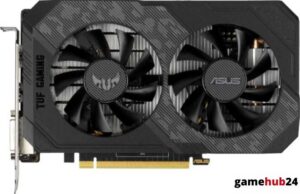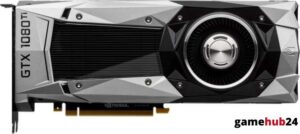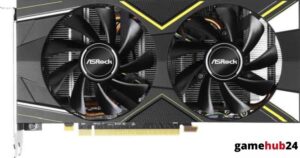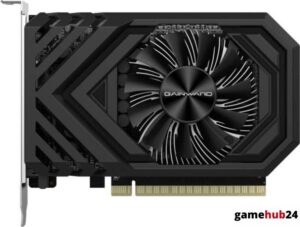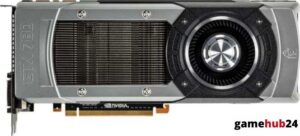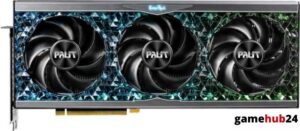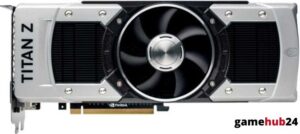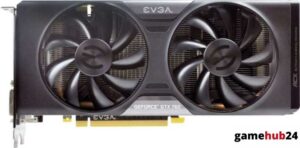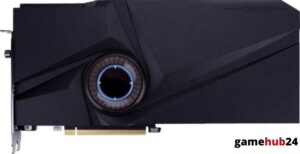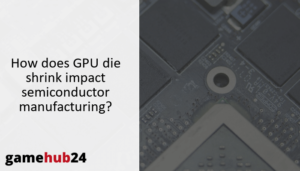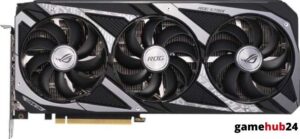System performance is greatly impacted by the types of GPU memory used, with GDDR and HBM memory having different functions. Gaining an understanding of these distinctions, their distinct features, and their particular uses in various GPUs can greatly improve your proficiency with computer hardware.
Deciphering the intricacies of GPU memory, we have examined its vital function in system efficiency, the distinctions between GDDR and HBM memory, and their impact on rendering velocity and visual excellence. We’ve also looked at the features of HBM, GDDR5, and GDDR6 memory, as well as how NVIDIA and AMD GPUs use them. The type of GPU memory that is selected has a big influence on professional and gaming applications, thus system configuration must take this into account.
- GPU memory is a key determinant of system performance, influencing rendering speed and image quality.
- GDDR and HBM are the common types of GPU memory, each with unique characteristics and performance levels.
- GDDR5 and GDDR6 are widely used in mainstream GPUs, while HBM is found in high-end GPUs due to its superior performance and higher cost.
- The choice of GPU memory type significantly impacts the performance of gaming and professional applications.
| Memory Type | Speed | Capacity | Usage | Cost |
|---|---|---|---|---|
| GDDR5 | High | Medium | Older or mid-range GPUs | Low |
| GDDR6 | Very High | High | Newer, high-performance GPUs | Medium |
| HBM | Extremely High | High | Top-tier GPUs for professional applications or hardcore gaming | High |
This table provides a comparison of the different types of GPU memory, including their speed, capacity, usage, and cost.
What is the role of memory in a GPU?
A Graphics Processing Unit’s (GPU) memory is an essential part that greatly affects the system’s overall performance. It holds the data that the GPU needs to process temporarily in storage. Shaders, textures, and other graphical data fall under this category. Rendering speed and image quality are closely related to the speed and capacity of the GPU memory, also known as Video Random Access Memory (VRAM). A GPU with sufficient memory can easily manage intricate 3D models and high-resolution textures, resulting in a flawless user experience.
How does memory affect the performance of a GPU?
Memory is a key component in influencing a GPU’s performance. The GPU’s ability to access and process data quickly is determined by the memory’s speed, which is expressed in Gb/s. Smoother gameplay and faster graphic rendering are made possible by speedier memory. On the other hand, the amount of data that the GPU can store for quick access depends on the memory capacity. Higher resolution visuals and more complicated operations can be handled by a GPU with more RAM without stuttering or slowing down. As a result, memory capacity and speed play critical roles in GPU performance.
What is the difference between GPU memory and system memory?
Within a computer system, GPU memory and system memory—also referred to as Random Access Memory (RAM)—have distinct functions. System memory is used by the CPU to store data for all other computing processes, whereas GPU memory is only used to store and analyze graphics data. GPU memory is frequently far quicker than system memory because it is made to handle massive volumes of graphical data with extreme speed and efficiency. System memory, on the other hand, processes a greater range of data faster but with greater versatility.
Take into account the type of RAM a GPU needs while selecting one for gaming. Because GDDR6 is more recent and faster, it can provide improved graphics and more fluid gaming. Nonetheless, a GPU with GDDR5 RAM can still deliver an enjoyable gaming experience if you’re on a tight budget.
What are the common types of GPU memory?
The two most popular forms of GPU memory are HBM (High Bandwidth Memory) and GDDR (Graphics Double Data Rate). Because it strikes a compromise between price and performance, GDDR memory—which comes in variants including GDDR5 and GDDR6—is frequently found in standard GPUs. Conversely, HBM is a more recent memory technology that provides better performance but comes with a higher price tag. Usually, it’s found in expensive GPUs utilized for demanding games or work-related tasks.
What is GDDR memory in GPUs?
A kind of DRAM (Dynamic Random Access Memory) made especially for graphics processing is found in GPUs as GDDR memory. It performs better in terms of graphics performance and data transfer because it runs at quicker speeds than the typical system memory. The most widely used GDDR5 and GDDR6 variants of GDDR memory are available in multiple versions. The performance levels of these variants vary, with GDDR6 offering greater bandwidth and faster speeds than GDDR5.
What is HBM memory in GPUs?
GPUs’ high-performance RAM, or HBM memory, is intended for sophisticated graphics processing. In contrast to GDDR, it employs a new design that stacks memory chips vertically to provide a substantially larger bandwidth and a broader memory bus. Because of this, HBM memory is incredibly effective and quick, able to process massive volumes of data quickly. But only high-end GPUs can use it because of its costly production process and intricate architecture, which make it more complex than GDDR memory.
What are the characteristics of GDDR5 and GDDR6?
Two popular forms of GPU memory with varying performance levels are GDDR5 and GDDR6. For many years, GDDR5 has been the industry standard in GPU memory because it provides dependable performance at a fair price together with fast speeds. In contrast, GDDR6 memory is a more recent and efficient iteration of GDDR memory. Higher bandwidth and lower power consumption compared to GDDR5 make it a popular option for high-performance, more recent GPUs.
Were you aware? High-end GPUs use HBM memory, which has a layered design that provides a much larger memory bus and much higher bandwidth. Because of this, it is incredibly quick and effective and can process massive volumes of data quickly.
What are the key features of GDDR5 memory?
Memory using GDDR5 is renowned for its rapid speed and effectiveness. It can continue to run at high speeds even when faced with heavy loads since it operates at a higher voltage than its successors. A broad memory bus is another property of GDDR5 memory that helps it manage massive volumes of data at once. This makes it a fantastic option for jobs like gaming and video editing that call for a high data flow.
How does GDDR6 differ from GDDR5?
The advancement of GDDR5 memory, GDDR6 offers a number of significant enhancements. It produces less heat and uses less electricity when operating at a lower voltage. Higher bandwidth is another benefit of GDDR6, which enables quicker data transfer and better performance for activities requiring a lot of graphics. Furthermore, GDDR6 offers enhanced error correcting capabilities that raise the GPU’s dependability and stability. With these improvements, GDDR6 is now a better option for high-performance computing applications.
How does HBM memory compare to GDDR memory?
Different applications are better suited for different performance levels offered by HBM and GDDR memory. Compared to GDDR memory, HBM memory delivers a substantially better bandwidth because to its layered architecture and wide memory interface. This makes it perfect for jobs like scientific computing or professional graphics rendering that call for processing massive volumes of data quickly. However, HBM memory is more expensive than GDDR memory, which is more frequently found in mainstream GPUs, due to its intricate design and manufacturing process.
What are the advantages of HBM over GDDR?
Compared to GDDR, HBM has a number of benefits. Its layered architecture provides a substantially better bandwidth by enabling a bigger memory bus. As a result, HBM can handle more data concurrently, which improves speed for jobs requiring a lot of graphics. In addition to running at a lower voltage than GDDR, HBM produces less heat and uses less electricity. Furthermore, HBM’s modest size enables more compact and effective GPUs, which makes it a great option for high-performance yet space-constrained applications.
What are the limitations of HBM memory?
HBM memory has several restrictions even though it performs better. Its usage is restricted to high-end GPUs due to its intricate design and more costly production process compared to GDDR memory. HBM memory’s great performance and small size also necessitate a more complex cooling system. Moreover, HBM may not always provide greater capacity, even though it does give better bandwidth, which could be a drawback for applications requiring a lot of memory.
Which GPUs use GDDR5, GDDR6, and HBM memory?
NVIDIA, AMD, and other manufacturers produce a range of GPUs that employ GDDR5, GDDR6, and HBM memory. While GDDR6 is usually found in more recent, high-performance GPUs, GDDR5 is more frequently seen in older or mid-range GPUs. Because HBM memory is expensive and performs poorly, it is typically only used in high-end GPUs for demanding games or professional applications.
What NVIDIA GPUs use GDDR5, GDDR6, and HBM memory?
In various GPUs, NVIDIA uses GDDR5, GDDR6, and HBM memory. Older models such as the GeForce GTX 1060 employ GDDR5, however more recent models such as the GeForce RTX 2080 and RTX 3070 use GDDR6. Due to its increased performance and bandwidth, HBM2 and HBM2E memory are used by NVIDIA’s high-end GPUs, such as the Tesla V100 and A100.
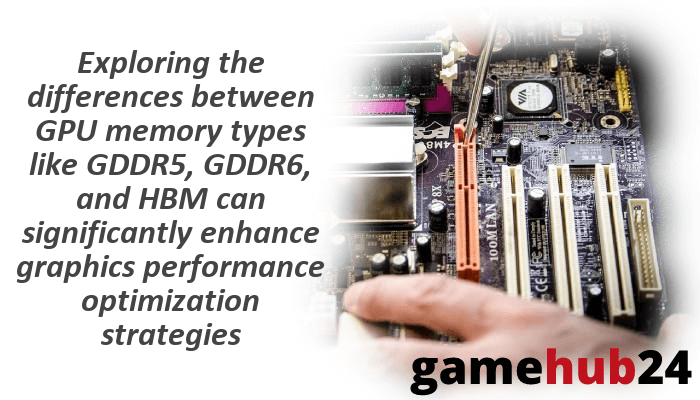
What AMD GPUs use GDDR5, GDDR6, and HBM memory?
AMD also incorporates HBM memory, GDDR5, and GDDR6 into their GPUs. Radeon RX 580 and other earlier models use GDDR5, while the RX 6800 and RX 5700 XT are examples of more recent devices that use GDDR6. Because of its high bandwidth and performance, AMD uses HBM2 memory in their high-end GPUs, such as the Radeon VII and the Radeon Pro VII.
How to choose the right GPU memory type for your needs?
Your budget and unique requirements will determine the best type of GPU memory to use. For ordinary computing chores or light gaming, a GPU with GDDR5 or GDDR6 RAM should be plenty. However, a GPU with HBM memory can be a better option if you work as a graphic designer, professional gamer, or utilize apps that demand high data speed. The GPU’s power and heat production should also be taken into account, as these factors can affect your system’s overall performance and lifespan.
What factors to consider when choosing a GPU memory type?
Think about things like performance, price, power consumption, and heat output when selecting a GPU memory type. Performance should be in line with your processing requirements, including memory speed and capacity. Cost is another important consideration because memory types with higher performance, such HBM, are more expensive. Select a GPU with economical power consumption and efficient cooling since these factors can affect the system’s lifespan and overall performance.
How does the choice of GPU memory type affect gaming and professional applications?
The type of GPU memory selected can have a big impact on professional and gaming applications. A GPU with high-speed RAM improves gaming performance by rendering visuals faster and more smoothly. Larger datasets and more sophisticated activities can be handled by a GPU with high-capacity memory for professional applications like 3D rendering or video editing. For this reason, selecting the proper GPU memory type is essential to getting the most performance possible in both professional and gaming applications.




